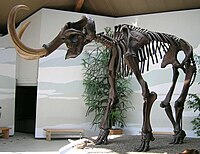
Dung‐associated arthropods influence foraging ecology and habitat selection in Black‐necked Cranes (Grus nigricollis) on the Qinghai–Tibet Plateau
Sign Up to like & getrecommendations! Published in 2019 at "Ecology and Evolution"
DOI: 10.1002/ece3.4904
Abstract: Abstract Variation in grassland vegetation structure influences the habitat selection of insectivorous birds. This variation presents a trade‐off for insectivorous predators: Arthropod abundance increases with vegetation height and heterogeneity, but access to arthropod prey items… read more here.
Keywords: habitat selection; dung; black necked; ecology ... See more keywords

Divergent water requirements partition exposure risk to parasites in wild equids
Sign Up to like & getrecommendations! Published in 2022 at "Ecology and Evolution"
DOI: 10.1002/ece3.8693
Abstract: Abstract For grazing herbivores, dung density in feeding areas is an important determinant of exposure risk to fecal‐orally transmitted parasites. When host species share the same parasite species, a nonrandom distribution of their cumulative dung… read more here.
Keywords: density; exposure risk; dung; exposure ... See more keywords

Ecological functions provided by dung beetles are interlinked across space and time: evidence from 15 N isotope tracing.
Sign Up to like & getrecommendations! Published in 2017 at "Ecology"
DOI: 10.1002/ecy.1653
Abstract: Maintaining multiple ecological functions ("multifunctionality") is crucial to sustain viable ecosystems. To date most studies on biodiversity-ecosystem functioning (BEF) have focused on single or few ecological functions and services. However, there is a critical need… read more here.
Keywords: isotope tracing; time; dung; dung beetles ... See more keywords

Diversity of dung beetle-associated yeasts from pristine environments of Botswana.
Sign Up to like & getrecommendations! Published in 2023 at "Yeast"
DOI: 10.1002/yea.3852
Abstract: Yeast-insect interactions are increasingly becoming an attractive source of discovery for previously unknown, unique, diverse, and industrially relevant yeast species. Despite a wealth of studies that have recently focused on yeasts in symbiotic association with… read more here.
Keywords: diversity dung; environments botswana; diversity; dung beetles ... See more keywords

Dung in the dumps: what we can learn from multi-proxy studies of archaeological dung pellets
Sign Up to like & getrecommendations! Published in 2020 at "Vegetation History and Archaeobotany"
DOI: 10.1007/s00334-020-00806-x
Abstract: A key question in archaeobotany concerns the role of herbivore dung in contributing plant remains to archaeobotanical assemblages. This issue has been discussed for at least 40 years and has motivated several archaeobotanical studies on identifying… read more here.
Keywords: multi proxy; dung; dung derived; herbivore dung ... See more keywords

Dung beetle conservation biogeography in southern Africa: current challenges and potential effects of climatic change
Sign Up to like & getrecommendations! Published in 2019 at "Biodiversity and Conservation"
DOI: 10.1007/s10531-019-01904-7
Abstract: Miocene, Pliocene and Pleistocene changes to the geomorphology, climate and vegetation of southern Africa are considered responsible for radical differences between southwest and northeast dung beetle assemblages (Coleoptera: Scarabaeidae: Scarabaeinae) leading to current endemism in… read more here.
Keywords: conservation; dung; dung beetle; southern africa ... See more keywords

Do dung beetles show interrelated evolutionary trends in wing morphology, flight biomechanics and habitat preference?
Sign Up to like & getrecommendations! Published in 2018 at "Evolutionary Ecology"
DOI: 10.1007/s10682-018-9958-z
Abstract: In flying organisms, wing shape and biomechanical properties are recognized as key traits related to dispersal, foraging behavior, sexual selection and habitat preferences. To determine if differences in dung beetle wing shape and flight biomechanics… read more here.
Keywords: shape; biomechanics; analysis; wing shape ... See more keywords

Temporal Variation of White Rhino Dung Odours
Sign Up to like & getrecommendations! Published in 2017 at "Journal of Chemical Ecology"
DOI: 10.1007/s10886-017-0890-4
Abstract: In order for an olfactory signal to be effective, it must persist in the environment for an extended period. White rhino dung odours transmit information about sex, age, territorial and oestrous states. As these odours… read more here.
Keywords: rhino dung; dung; season; white rhino ... See more keywords

Ritualised Dung Kicking by White Rhino Males Amplifies Olfactory Signals but Reduces Odour Duration
Sign Up to like & getrecommendations! Published in 2018 at "Journal of Chemical Ecology"
DOI: 10.1007/s10886-018-0988-3
Abstract: Many mammals enhance their olfactory signals visually by depositing them in conspicuous locations such as well-travelled paths. It is also possible to enhance the odour itself through behaviours aimed at modifying odour emission rates. White… read more here.
Keywords: olfactory signals; males amplifies; dung; territorial males ... See more keywords

Succession of Dung-Inhabiting Beetles and Flies Reflects the Succession of Dung-Emitted Volatile Compounds.
Sign Up to like & getrecommendations! Published in 2021 at "Journal of chemical ecology"
DOI: 10.1007/s10886-021-01266-x
Abstract: Chemical cues, such as volatile organic compounds (VOCs), are often essential for insects to locate food. Relative to the volume of studies on the role of VOCs in insect-plant relationships, the role of VOCs emitted… read more here.
Keywords: insects; inhabiting beetles; dung; succession dung ... See more keywords

Detection of tyrosine, trace metals and nutrients in cow dung: the environmental significance in soil and water environments
Sign Up to like & getrecommendations! Published in 2018 at "Acta Geochimica"
DOI: 10.1007/s11631-018-0263-x
Abstract: This study examined the dissolved organic matter (DOM) components of cow dung using a combination of fluorescence (excitation–emission matrix, EEM) spectroscopy and parallel factor (PARAFAC) modelling along with eleven trace metals using ICP-MS and nutrients… read more here.
Keywords: dung; tyrosine; cow dung; trace metals ... See more keywords